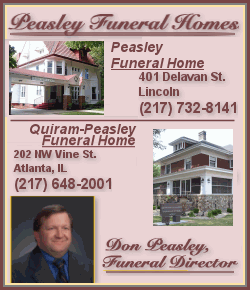|
Do you need insurance for
your drone?
 Send a link to a friend
Send a link to a friend
 [November 17, 2016]
By Beth Pinsker [November 17, 2016]
By Beth Pinsker
NEW
YORK (Reuters) - If a drone is on your holiday shopping list, be sure to
check your insurance coverage before you crack open that instruction
manual and take flight.
Damage from a drone is a bit more complicated than handing your kid a
baseball and dealing with the wreckage an errant pitch might cause to a
window.
There is no official tally of damage caused by drones, yet the roster of
high-profile injuries includes musician Enrique Iglesias and Cleveland
Indians pitcher Trevor Bauer. And there are internet lists galore, like
a database of known U.S. incidents. (http://rochester.nydatabases.com/database/
domestic-drone-accidents)
Even the pros can have problems.
A drone operated by Brett Woods, a pilot who co-founded the drone
company Aerial Concept Unmanned Systems, was supposed to climb 400 feet,
but instead flew into the 27th floor of a building. Luckily, the
apartment it breeched was unoccupied, so the damage was chiefly to the
drone and the window.
Business insurance covered the damage. But hobbyists and others who buy
consumer-level drones cannot be so sure of what is covered if one of
their flying devices goes rogue.

WHAT'S COVERED
For the person who owns the drone, the prevailing insurance coverage
would be your homeowners policy or your renters' policy. But not
everyone has those. Only about 40 percent of renters in the U.S. have
coverage, according to the Insurance Information Institute (III), a
nonprofit trade group.
The drone itself is covered as personal property, but it might not be
worth a claim. The average deductible is $500, which is about what the
popular the DJI Phantom 3 standard, with HD video camera, runs right now
on Amazon.com.
Coverage for damage caused by the drone depends on the circumstances of
the accident, especially if negligence is involved, and whose property
is damaged.
"We evaluate every claim on its own merit," said Justin Herndon, a
spokesman for All State, one of the top insurers in the United States.
Damage to personal property caused by your own drone would fall under
the basic coverage to your structure. However, homeowners insurance does
not cover injuries to your own family or pets, according to Loretta
Worters, a spokesperson for III. You would have to get coverage for
injury through your medical insurance policy.

[to top of second column] |

A drone, made by CyPhy Works, carries a UPS package on Children's
Island off the coast of Beverly, Massachusetts, U.S. September 22,
2016. REUTERS/Brian Snyder

Coverage for bodily injury to somebody outside your family or for
somebody else's property would fall under the liability portion of your
homeowners policy. It could also protect you from lawsuits over privacy
issues.
If a drone drops out of the sky and damages your car (which sounds
fanciful, but is actually quite possible), the damage is covered by the
comprehensive section of your auto policy, subject to the deductible.
Drones over 0.55 pounds are required to register with the Federal
Aviation Agency. If the drone's owner can be identified, your auto
insurance may file a claim under that person's home or renters policy,
should they have one.
NEW POLICIES
There are other ways to protect yourself, too. Some drone hobbyist clubs
offer a group umbrella policy to members, for instance.
A new company, Verifly (verifly.com/), provides on-demand policies for
consumer drone enthusiasts and commercial users for about $10 an hour,
currently approved in 45 states. The user simply geo-locates through an
app. The policy covers a quarter-mile radius for up to $1 million of
third-party liability and unintentional invasion of privacy.
If known hazards are nearby - like a nuclear power plant or a stadium -
prices go up.
Verifly user David Baskwill signed up for coverage to film cross country
races. "I thought to myself, it would be a good idea to have some
protection," says Baskwill, a 57-year-old podiatrist from York,
Pennsylvania.

"The negativity is very high - and it will be until we all have drones,"
Baskwill says.
(Editing by Lauren Young and Andrew Hay)
[© 2016 Thomson Reuters. All rights
reserved.] Copyright 2016 Reuters. All rights reserved. This material may not be published,
broadcast, rewritten or redistributed. |